- Home
- >
- Preservation Archaeology Blog
- >
- A Decade of Weathering: The Mule Creek House
(September 1, 2024)—In 2014, I joined the Archaeology Southwest Field School staff. The field school had been operating out of Mule Creek, New Mexico, for several years prior, and I was brought in to develop and teach the experiential component of the curriculum. The goal was to give our students hands-on experience with making and using the material things they were recovering from archaeological sites.
I created several different activities. One was replicating how people built the puddled adobe houses the students were encountering in one of the ancient villages where they were working.
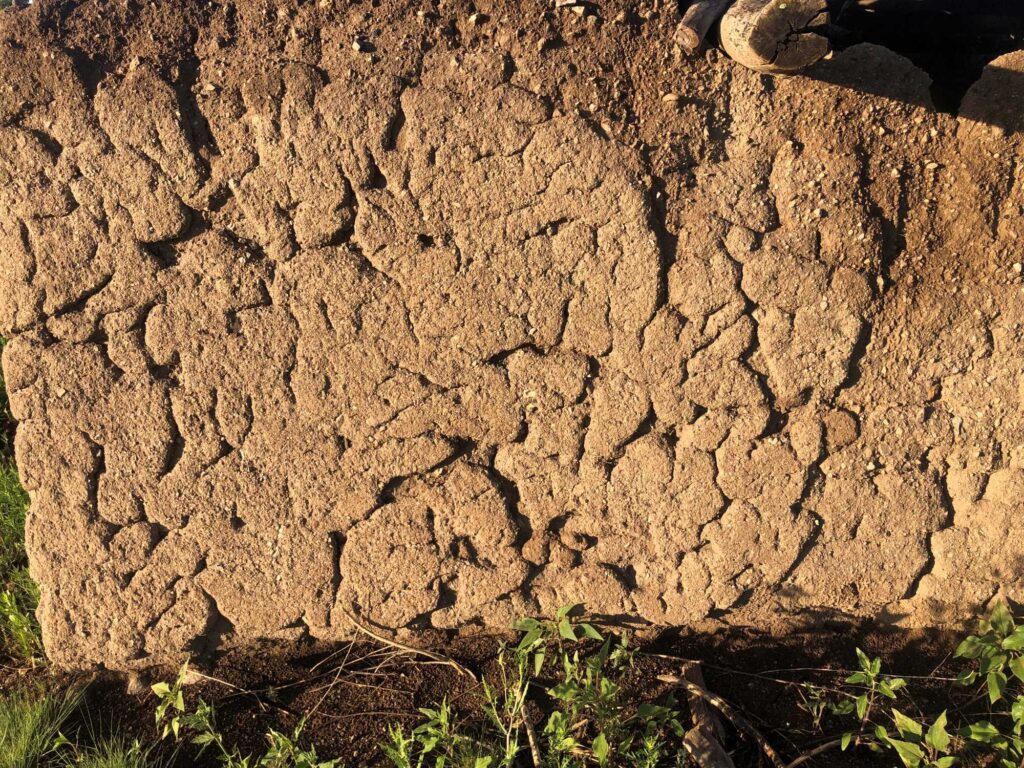
At Mule Creek, the hosts of our field headquarters had an adobe-brick manufacturing plant that produced bricks for commercial sales. One of our hosts had tons of experience with making adobe, so she was a big help in getting me started on the process. The site the students were working on was also my inspiration, because the exposed walls gave me insight into how to proceed.
We worked on building this replica structure for two field seasons. We had about a third of the house roof to finish at the end of the 2015 season.
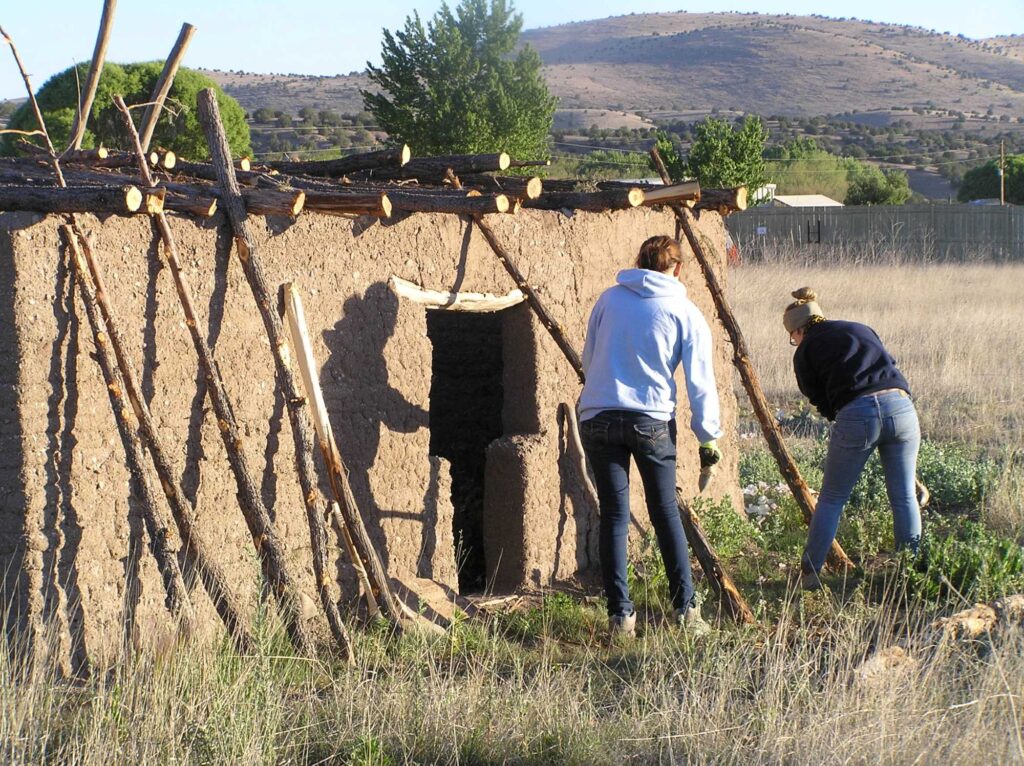
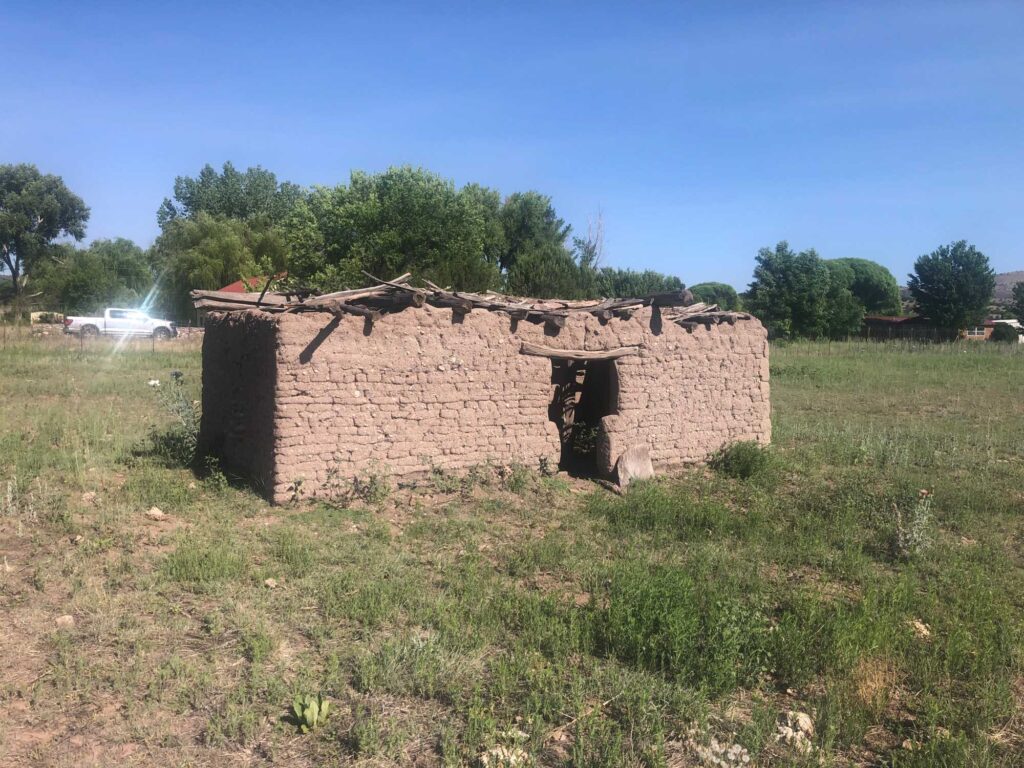
The following year we moved our base camp to Cliff, New Mexico, and our Mule Creek structure was left to the elements. Fast-forward a decade: While my family was visiting me at the field school this summer, we visited our Mule Creek hosts. This gave me the opportunity to study the conditions of the walls and roof after no care for so long. Here are some thoughts about what I learned, with more photos of the original construction compared to its current condition.
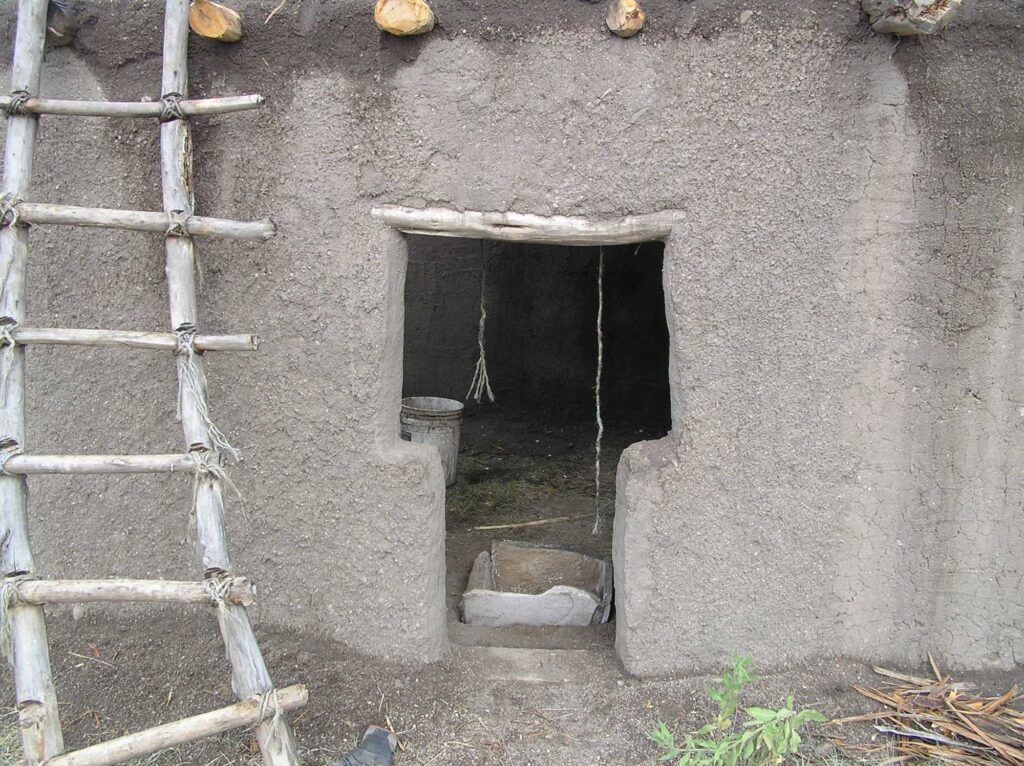
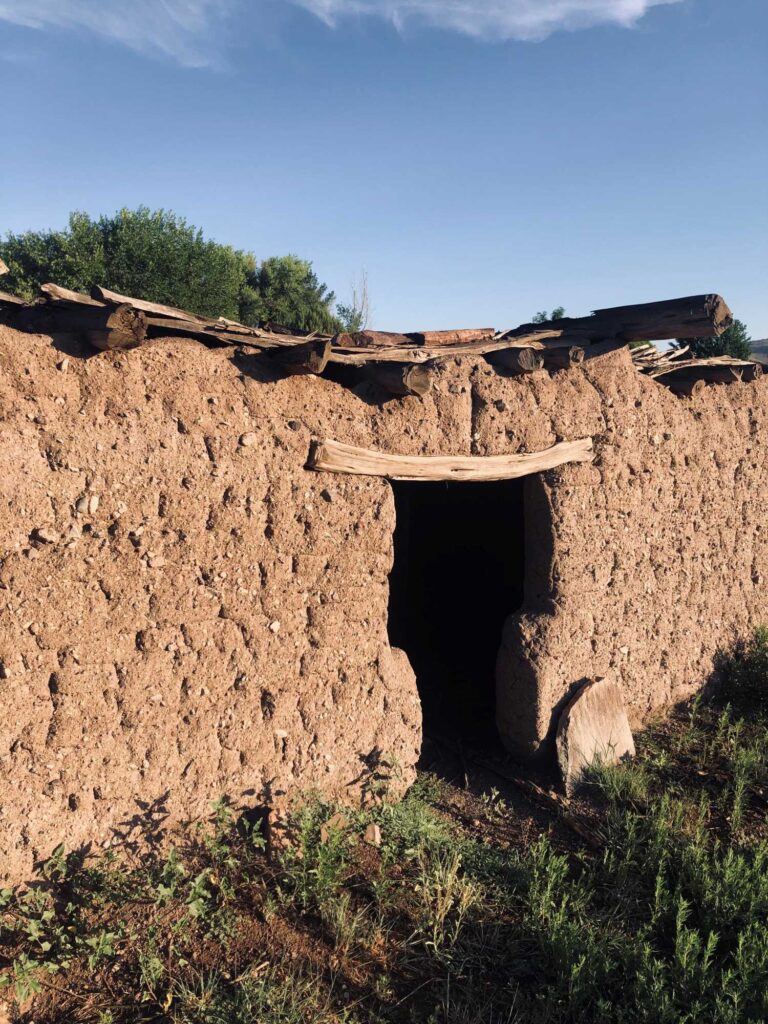
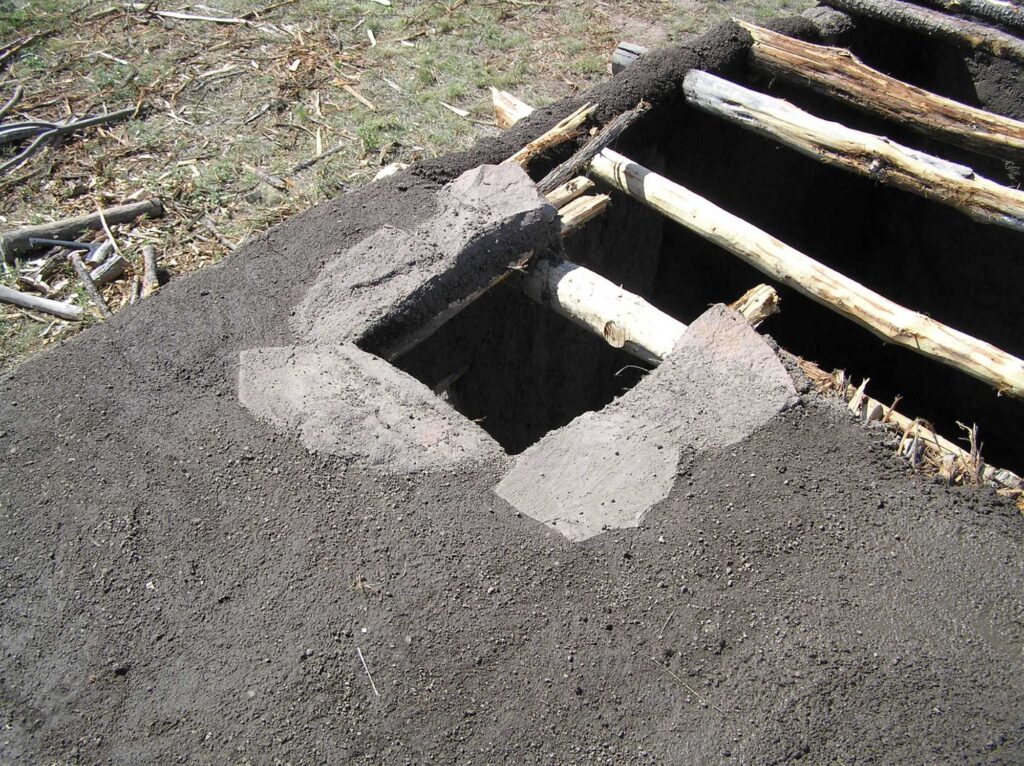
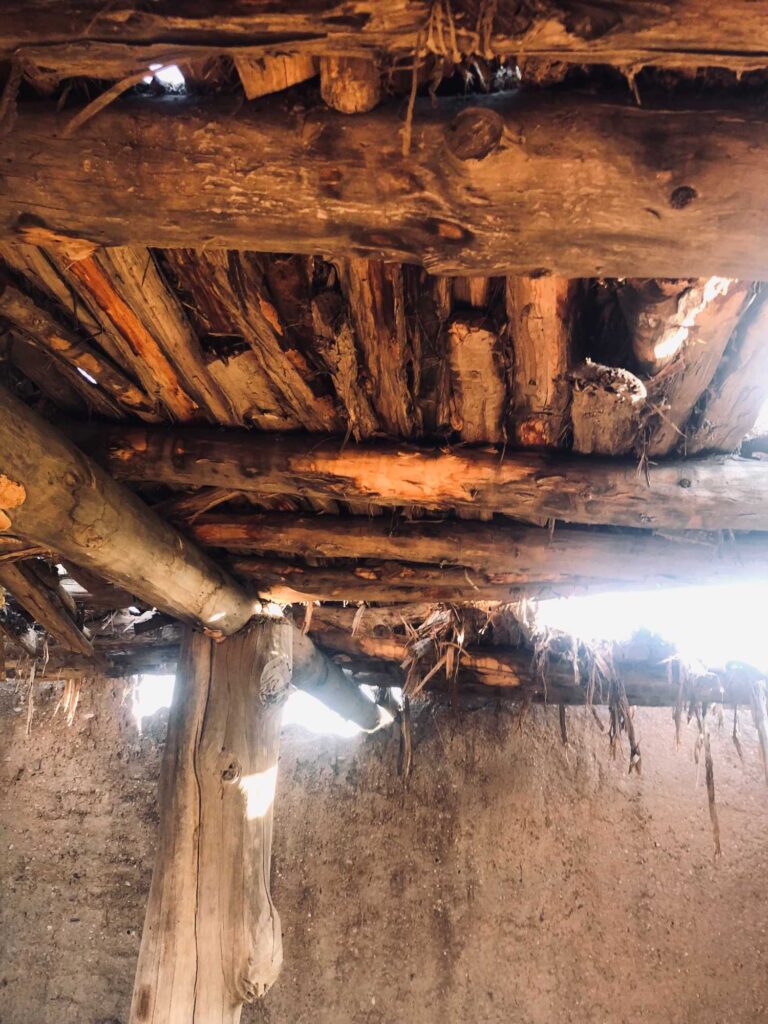
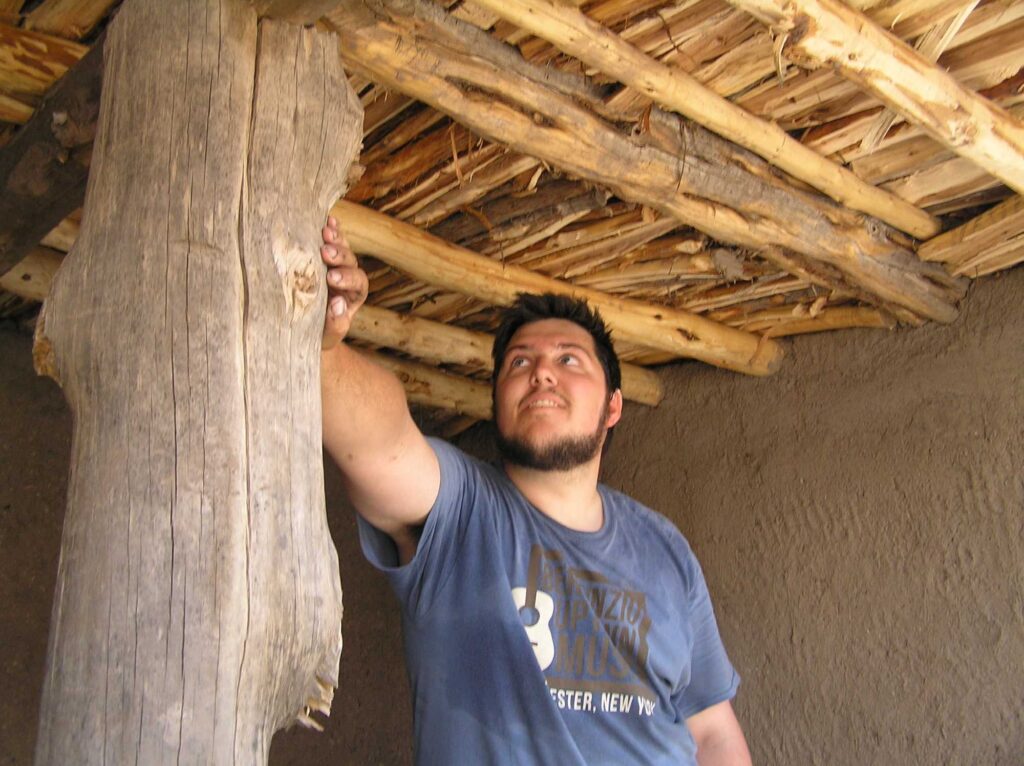
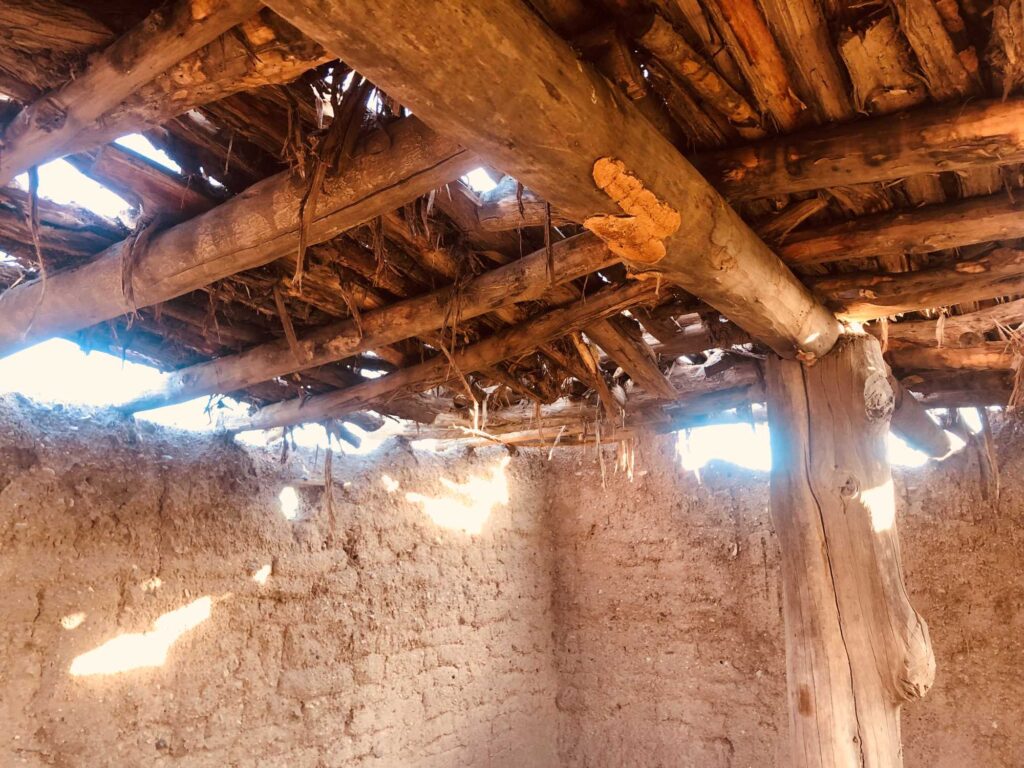
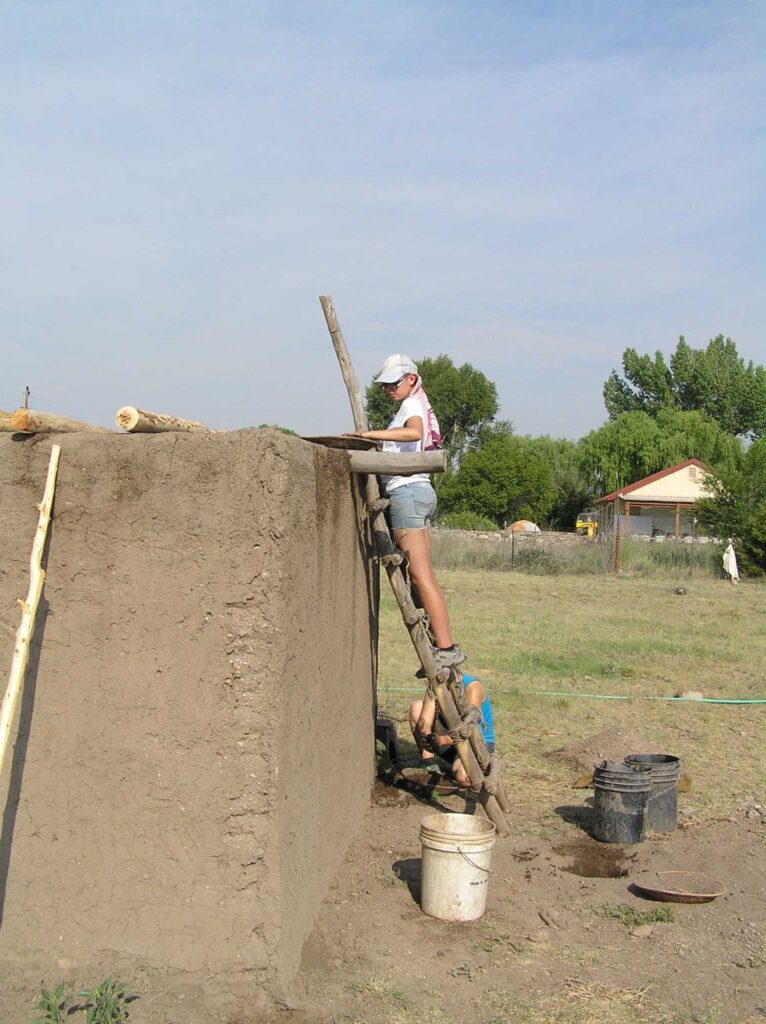
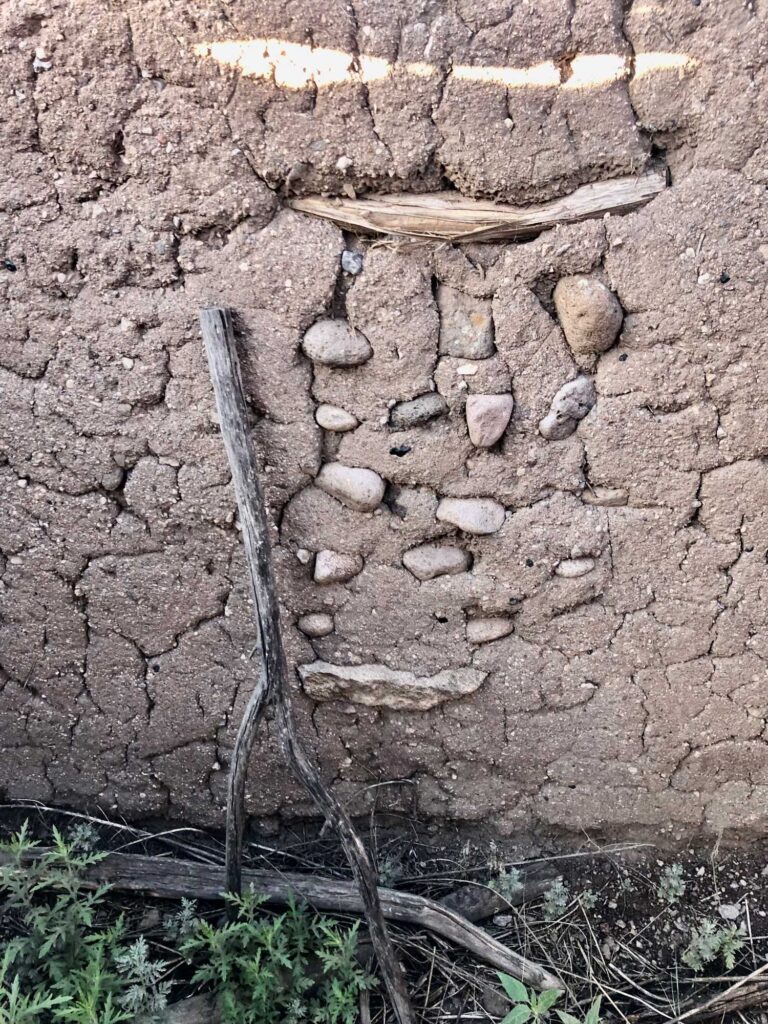
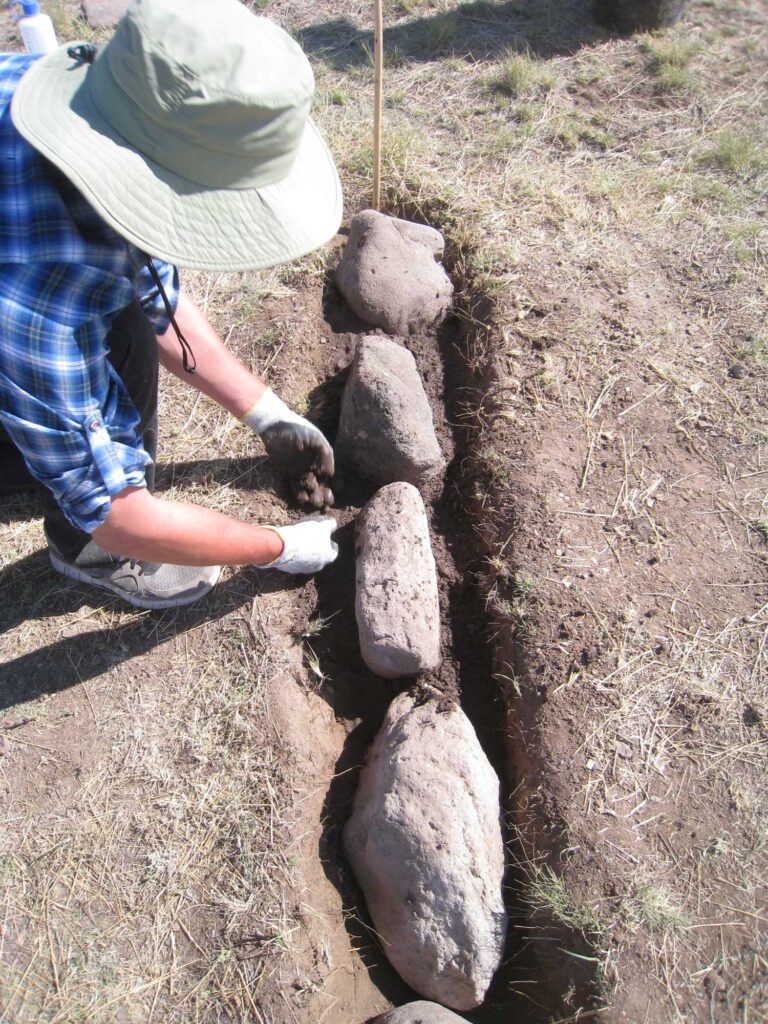
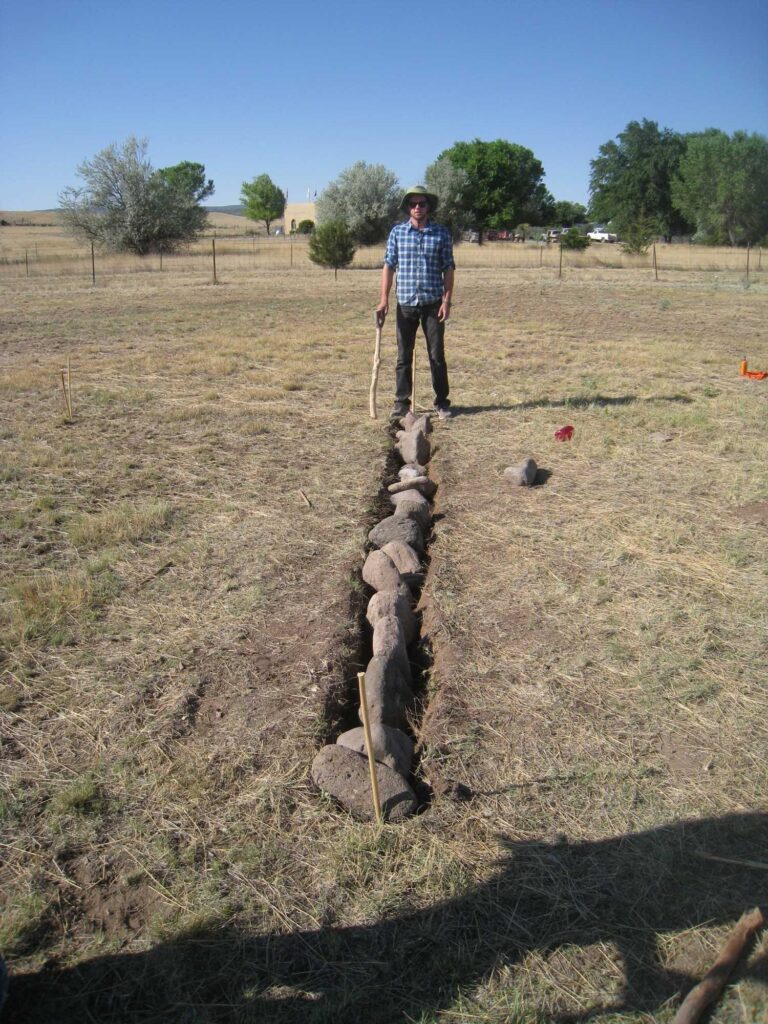
There are one to two rows of cimientos (foundation stones/cobbles) around the base of the walls. My crews set these into a footer trench filled with mud to form the base of the walls. I see now that I probably should have added another course of these stones; that would have slowed down the crumbling. The erosion from freezing and thawing was severe, to the point where some of the walls may be near imminent collapse. The one layer ended at just slightly above the ground surface, which is the point where the worst weathering from freezing and thawing occurs.
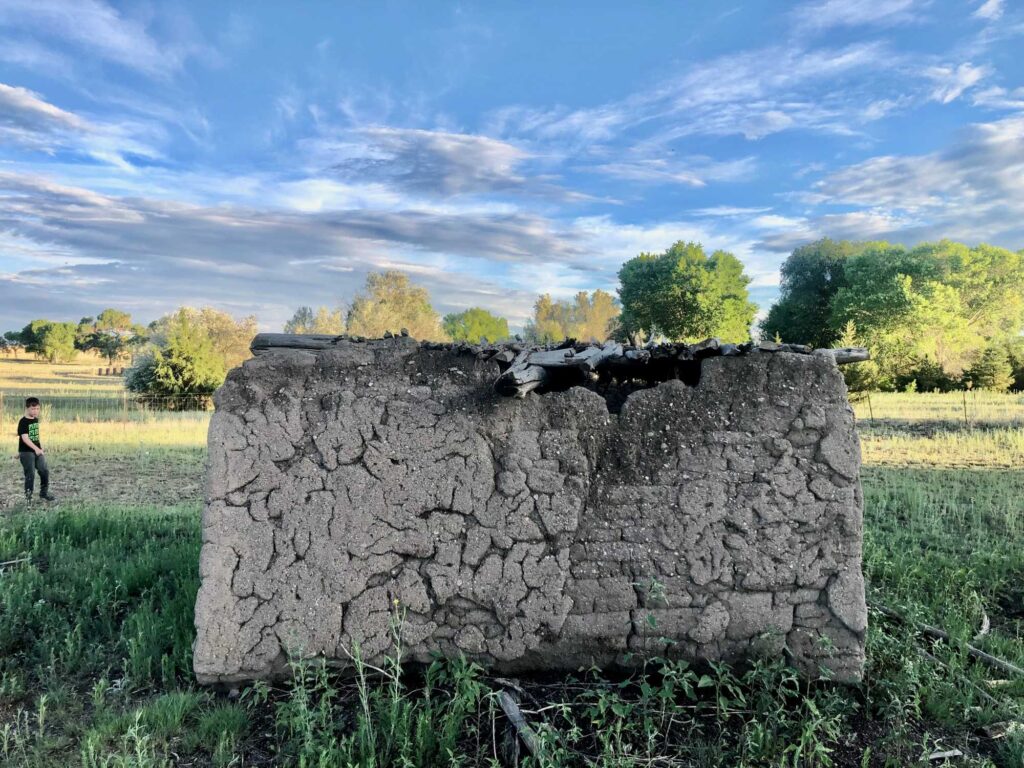
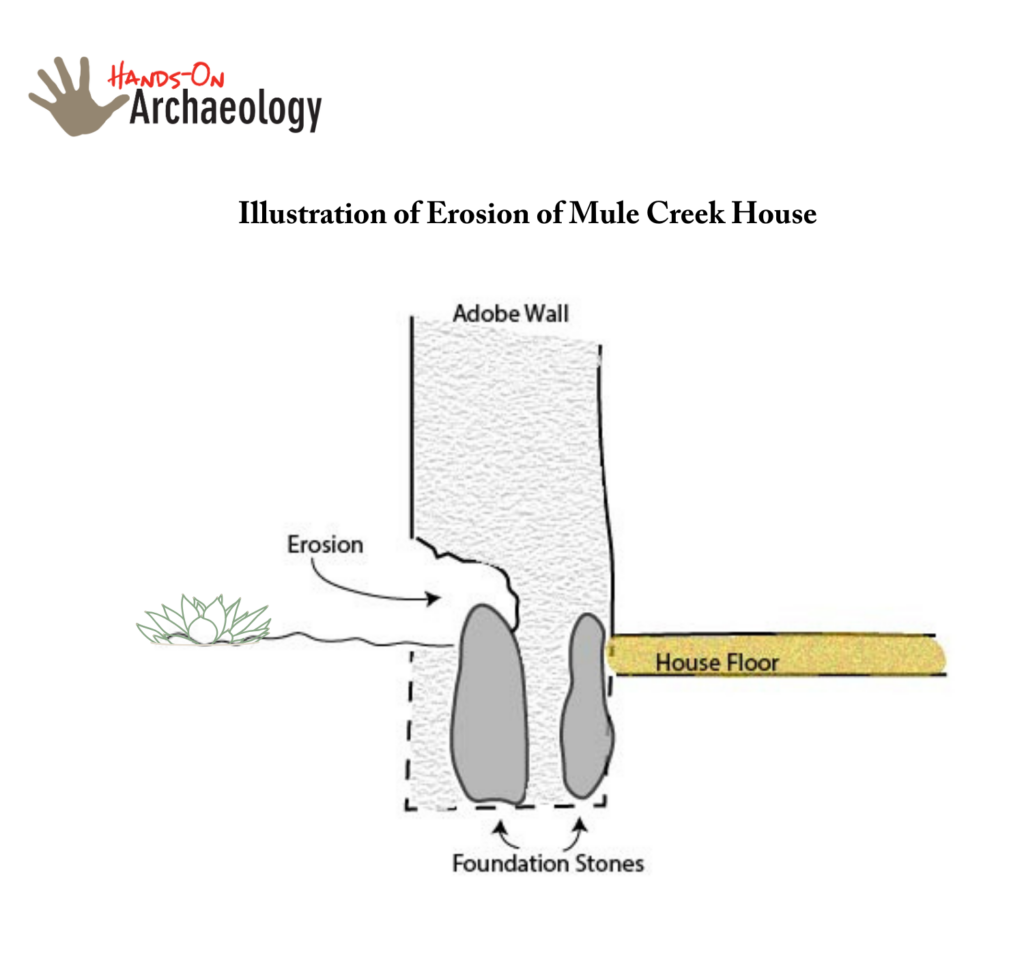
I think one of the big takeaways is that if the structure had undergone maintenance on a regular basis, it would be in great shape. If we had completed the roof and prepped it to drain the water off the sides of the walls, they would be in much better shape. The Mule Creek adobe is really good stuff. If a little work were continually put into mitigating the weathering—as people would have done in the past—this little house could last for many more years.